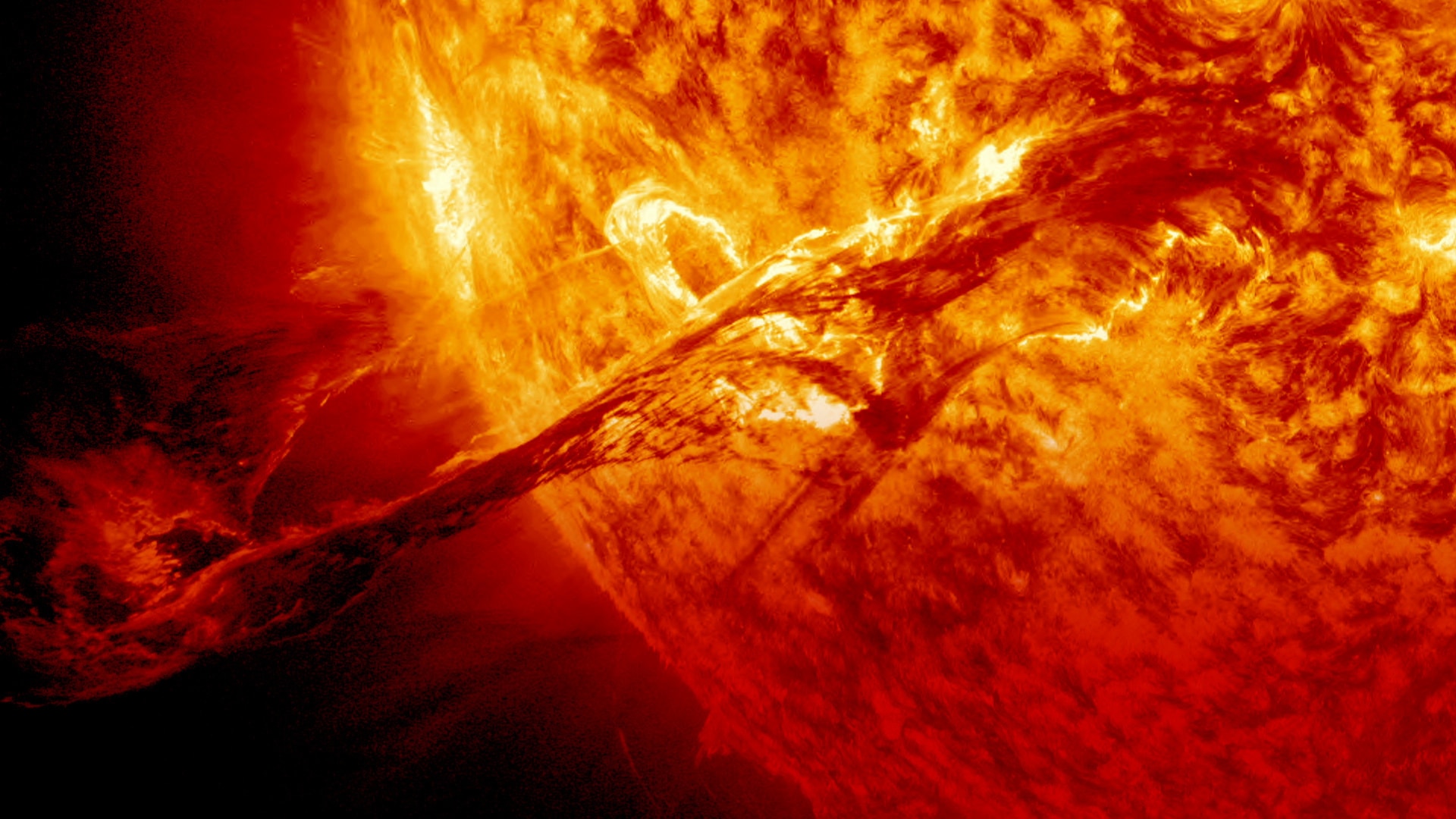space
Euclid’s mission will explore the darkest secrets of the universe
The European Euclid Space Telescope, due for launch in July, will attempt to explain two of the great mysteries of the universe: dark matter and dark energy.
published
The Euclid satellite was assembled in Cannes, in southern France.
France Press agency
The European Euclid space telescope is still housed in a sterile room, in Cannes, decorated in a sun-coloured dress. In a few months, it will be blasting into space in an effort to shed light on two of the great mysteries of the universe: dark matter and dark energy. These two elements, completely theoretical and invisible, make up 95% of the universe, but we know almost nothing about their exact nature. A lack of knowledge that mission chief Giuseppe Racca describes as a “cosmic embarrassment”.
Dark matter is thought to explain, among other things, why galaxies are not spread out in swarms of stars. As for dark energy, its existence is necessary to explain the acceleration of the expansion of the universe.
In the distant past of the universe
In an effort to lift the veil over these mysteries, the European Space Agency (ESA) mission will map the universe in 3D, encompassing two billion galaxies over a one-third part of the visible sky. The third dimension of the map will be time. Because by capturing the light of galaxies that took up to ten billion years to reach us, Euclid will plunge into the distant past of the universe, which was born 13.8 billion years ago.
The two-ton vessel, 4.7 meters high and 3.5 meters wide, was presented to the press for the first time this week, in the sterile white room of the Thales Alenia aerospace group in Cannes.
Launching in July
He will still have a few more tests before he leaves for Cape Canaveral, Florida. It will be launched on a SpaceX Falcon 9 rocket, between July 1 and 30. The originally planned flight on a Russian Soyuz rocket was canceled due to sanctions imposed on Russia following its invasion of Ukraine.
Euclid will join a nearby space telescope site James Webb1.5 million kilometers from Earth, which ensures that it will always be exposed to the sun from its solar panels. Its first images are expected next October, but it will take much longer for any discoveries, after analyzing the mountains of data that Euclid will provide.
The head of the mission explained to the press that the European mission, at a cost of 1.5 billion euros, should continue until 2029, with a few years of reward “if nothing extraordinary happens.”
Observing the invisible by measuring its absence
How would Euclid – who owes his name to the father of geometry – continue to observe the invisible? measure of his absence. Light from a very distant object, such as a galaxy, is deflected imperceptibly by the visible matter and dark matter it encounters on its way to the observer. This is the effect of weak gravitational lensing.
“By subtracting visible matter,” says Giuseppe Racca, “we can ‘calculate’ the presence of dark matter lying between ‘the distant object and the observer.'” For this purpose, Euclid has two instruments: a telescope with a diameter of 1.2 meters and an infrared spectrophotometer and photometer (NISP).
incomplete understanding
Our understanding of the universe is still flawed. For example, two very accurate measurements of the expansion rate of the universe currently give two different answers: an asymmetry called the Hubble tension, in which dark energy could play a role.
And this week, the James Webb telescope discovered six galaxies much more massive than expected, in the distant ages of the universe (between 500 and 700 million years after the Big Bang). Euclid could be the “only tool” capable of providing an answer to these questions, according to David Elbaz, an astrophysicist at the Atomic Energy Commission (CEA).
To stay up to date on your favorite topics and not miss any news, subscribe to the newsletter and receive daily, directly in your mailbox, the main information of the day.
(AFP)

“Music guru. Incurable web practitioner. Thinker. Lifelong zombie junkie. Tv buff. Typical organizer. Evil beer scholar.”







More Stories
Taste the first Canadian pizza to go into space
The Air and Space Forces want a “modular” plane to replace the Alphajet
Spain confirms that it is holding talks with Morocco